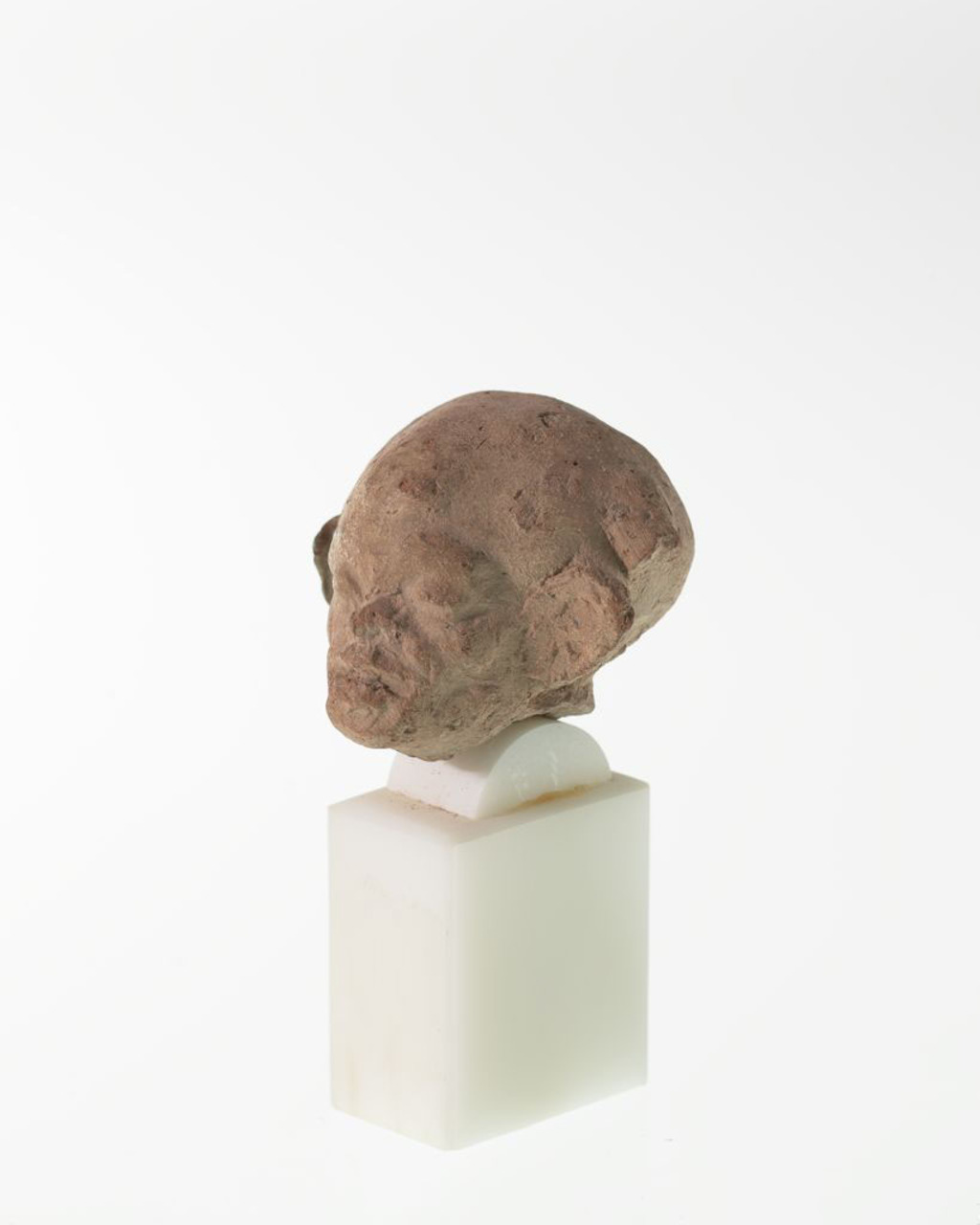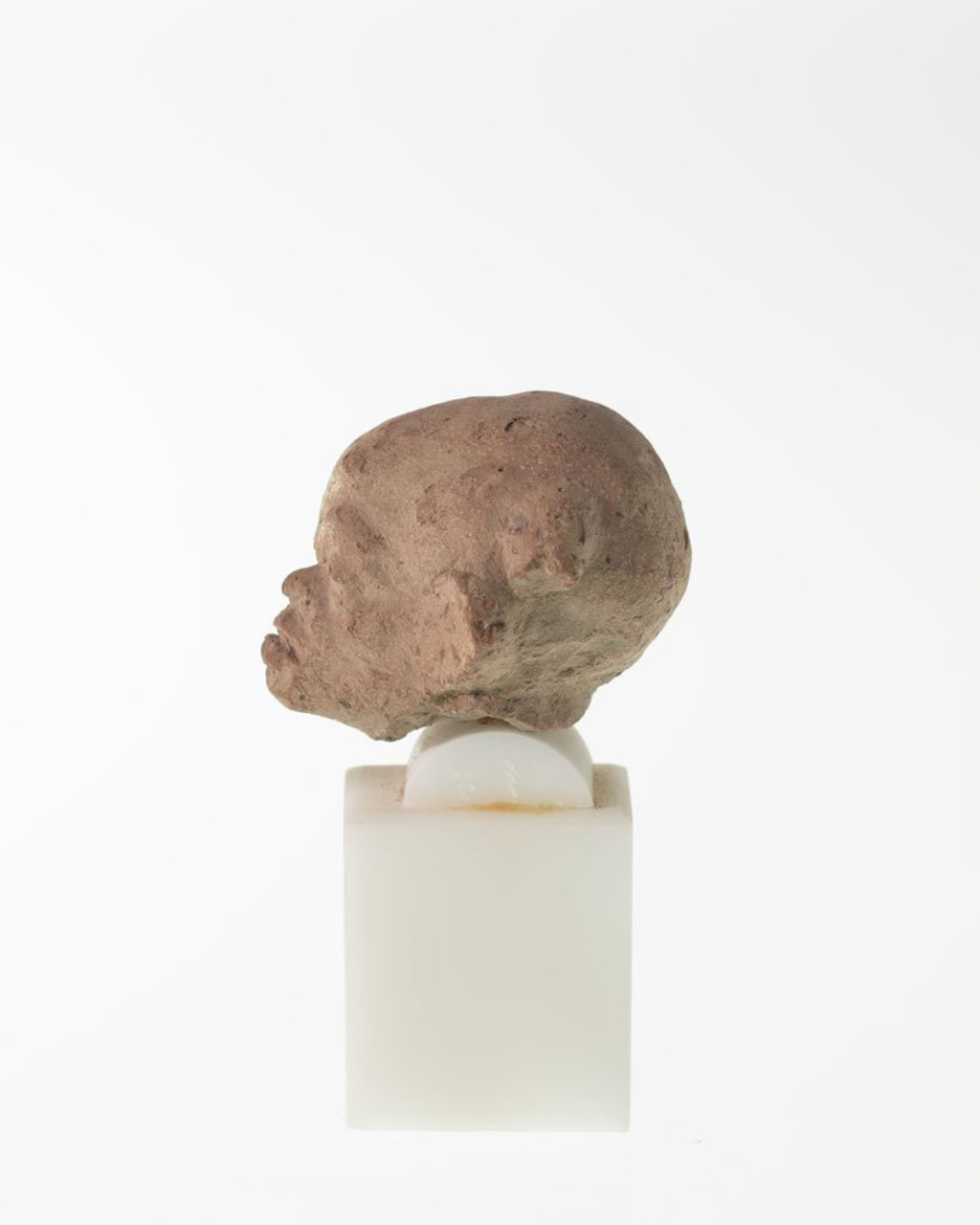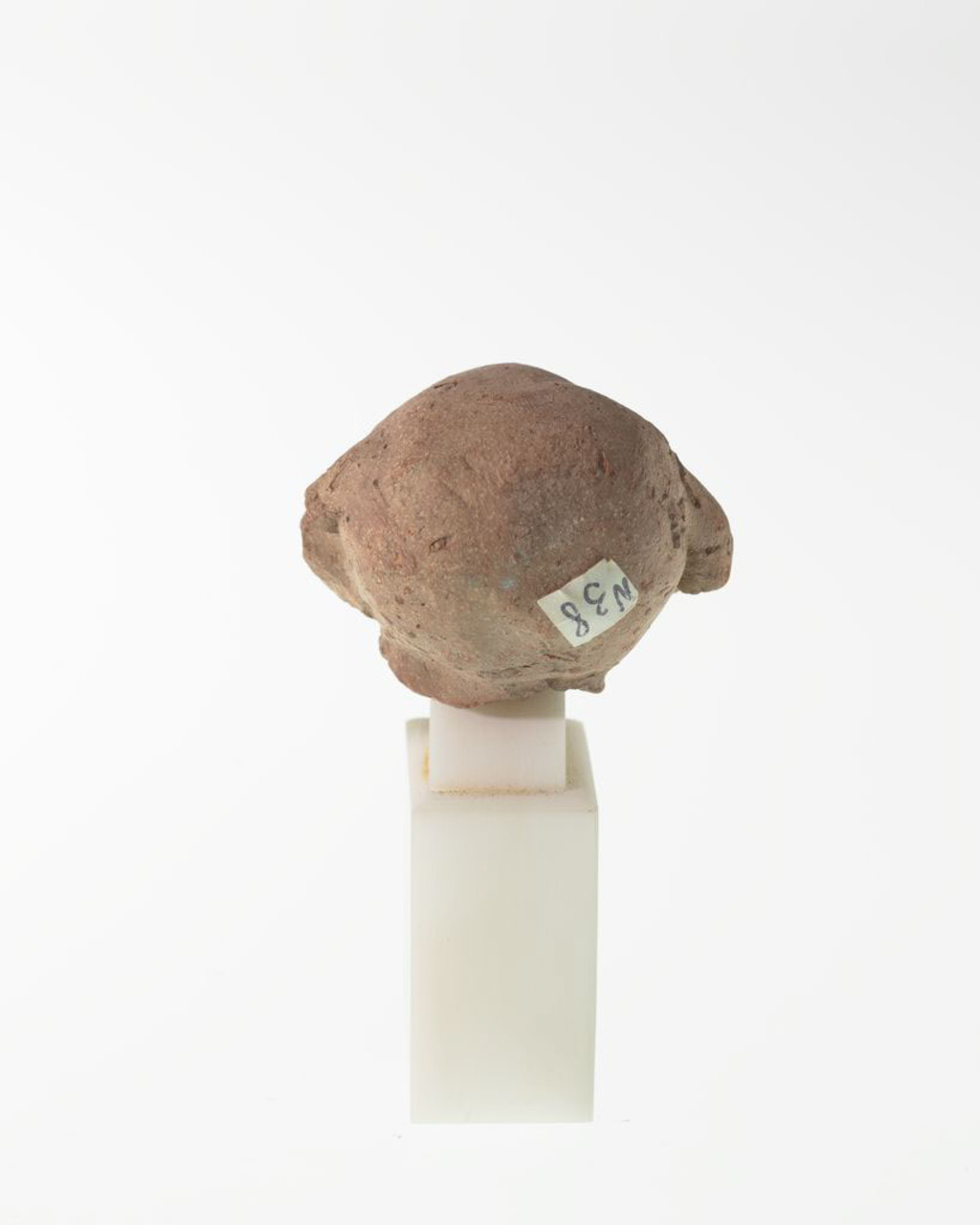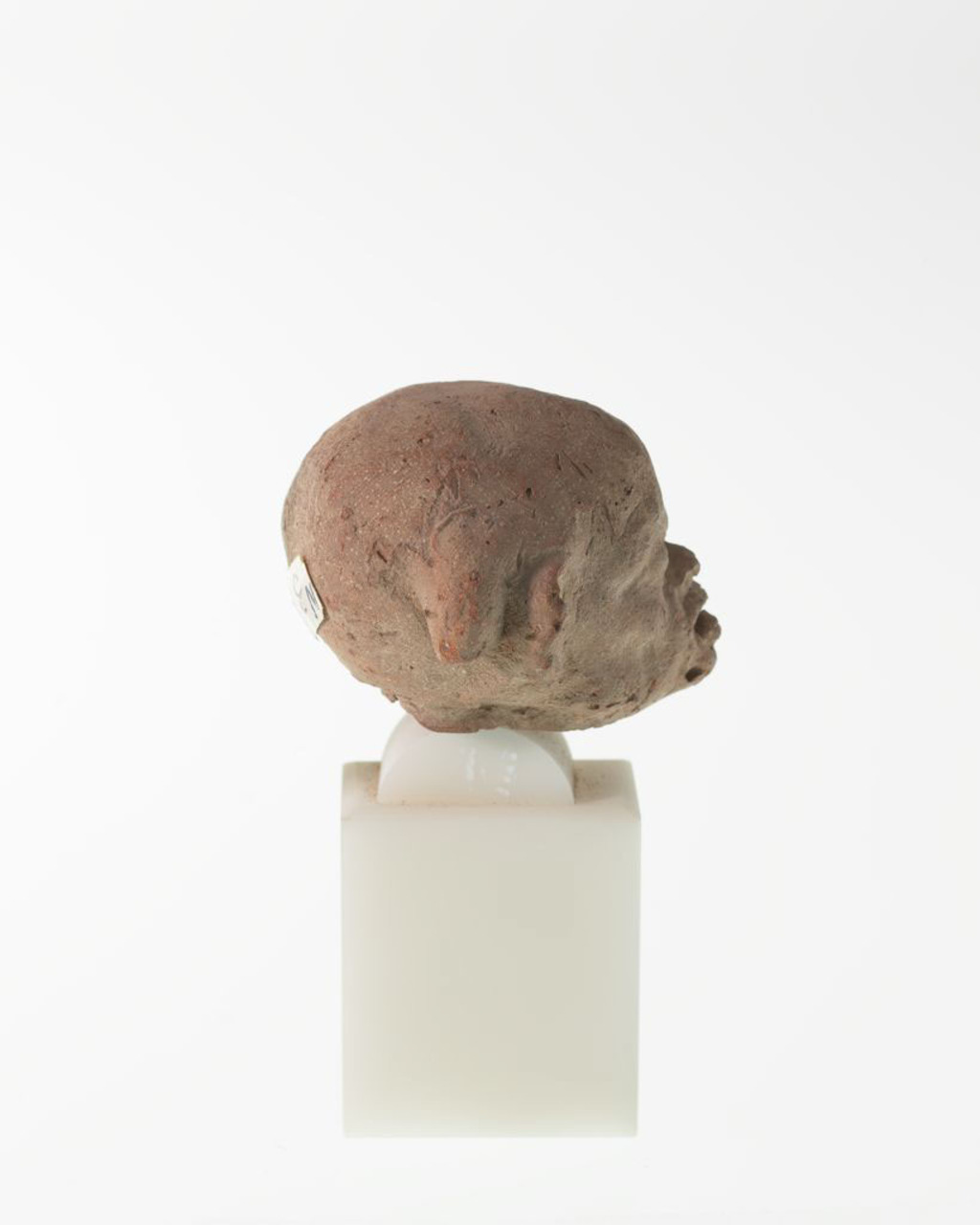Head of a Black African Man, 300 BCE-300 CE
Hellenistic or Roman
Terracotta
1 ¼ × 1 5/8 × 1 ¾ in. (3.2 × 4.1 × 4.4 cm)
3-D Object/Sculpture
1980-18.02 DJ
Learn More
Small figural objects such as this piece were produced using molds during portions of the Hellenistic and Roman periods (323 BCE–476 CE), primarily in Egypt. The identity of the figure is unclear as is its exact function. This terracotta head is broken at the chin and has large features, such as oversized ears and fleshy, exaggerated lips, a wide nose, and slightly bulging eyes. The figure appears to be balding with a wide, smooth top of the head, but possibly some indications of hair at the sides. Discoloration of the clay around the eyes suggests that details were once painted. Small protrusions on the head have clear indications of breaks, indicating there was once another element that has been lost over time. One possibility is that the figure was wreathed; this element appears on more fully preserved figurines in other collections. Alternatively, the points could be where some sort of handle attached, although the head is not hollow like those on other anthropomorphic vessels.
Related collections and exhibitions







